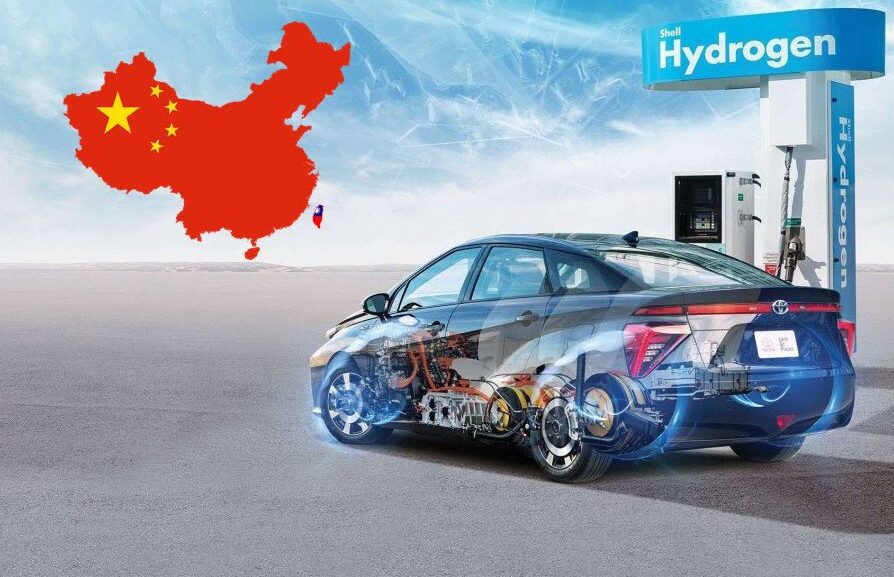Toyota’s Hydrogen Technology Expands Globally: Focusing on Europe and China Amidst Japan’s Slow Market Growth
Toyota recently made headlines with its breakthroughs in solid-state batteries for electric vehicles (EVs), capturing the attention of investors. However, another significant development that received less attention was the company’s plans to market and sell its hydrogen technology outside of Japan.
Due to Japan’s heavy reliance on energy imports, the country has long placed a major emphasis on hydrogen as an alternative to fossil fuels. Despite the growing popularity of battery-powered EVs, Japan remains steadfast in its commitment to hydrogen. However, the sales of hydrogen-powered vehicles have struggled to gain momentum, primarily due to the high cost of carbon-free hydrogen and the limited availability of hydrogen filling stations needed to power fuel cells.
Nevertheless, Toyota sees a substantial business opportunity in the global market by 2030, specifically targeting Europe, China, and North America. These regions represent the world’s largest economies, where competition to decarbonize and secure energy supply chains is fierce. Toyota believes that fuel cells, with their higher energy density, are well-suited for heavy-use vehicles with longer ranges, such as delivery trucks.
Interestingly, Toyota’s presentation did not highlight a strong market potential for hydrogen within Japan, despite the country being an early adopter of a national hydrogen strategy in 2017. In contrast, the US, Europe, and China have set more ambitious targets and investment plans for hydrogen utilization. Japan recently updated its strategy, aiming to increase annual hydrogen supply to 12 million tons by 2040 through a substantial ¥15 trillion ($106 billion) public-private investment over the next 15 years.
However, Japan’s current hydrogen targets have fallen short. The goal of selling 40,000 fuel-cell vehicles by 2020 was not achieved, with only about 7,700 hydrogen cars sold according to the Japan Automobile Dealers Association. Although 164 hydrogen stations have been built, the target of having 100 of them supply green hydrogen from renewable sources has not been met.
Toyota itself has faced challenges in meeting its own sales targets for fuel-cell vehicles worldwide. Since the launch of its hydrogen-powered Mirai in 2014, the company has sold fewer than 22,000 fuel-cell vehicles, including 3,924 units in the past year.
Executives within Japanese companies have expressed frustration over the lack of a clear government vision for reducing the cost of carbon-free hydrogen production. In contrast, countries like the US and China are offering incentives and making significant investments in the green hydrogen supply chain. As a result, companies such as Toyota and Panasonic are increasingly looking to sell their hydrogen technology outside of Japan.
While Japan aims to reach an annual hydrogen supply of approximately 3 million tons by 2030, China is targeting a staggering 40 million tons, while Europe and the US have set their sights on around 25 million tons each.
Mitsumasa Yamagata, head of Toyota’s hydrogen business, revealed that the company has already received global orders for 100,000 units of the Mirai’s hydrogen system by 2030, primarily for commercial vehicles. Through partnerships with European and Chinese truckmakers and increased local production, Toyota aims to double these orders, leading to a reduction in unit costs.
Toyota executives emphasized that while Japan remains an important market, their main priority is cost reduction. They believe that achieving volume through vehicle rollouts in Europe and China will help drive down costs, ultimately benefiting Japan as well. However, expanding into China presents a challenge for Japanese companies in terms of energy security and industrial competitiveness, considering past losses to lower-cost Chinese competitors in industries such as liquid crystal displays and silicon solar cells.
For Toyota, protecting its core technology in fuel cell stacks is crucial. While acknowledging the significant potential for hydrogen-powered transportation in China, the company must navigate the competitive landscape and maintain its technological advantage to succeed in this market.

